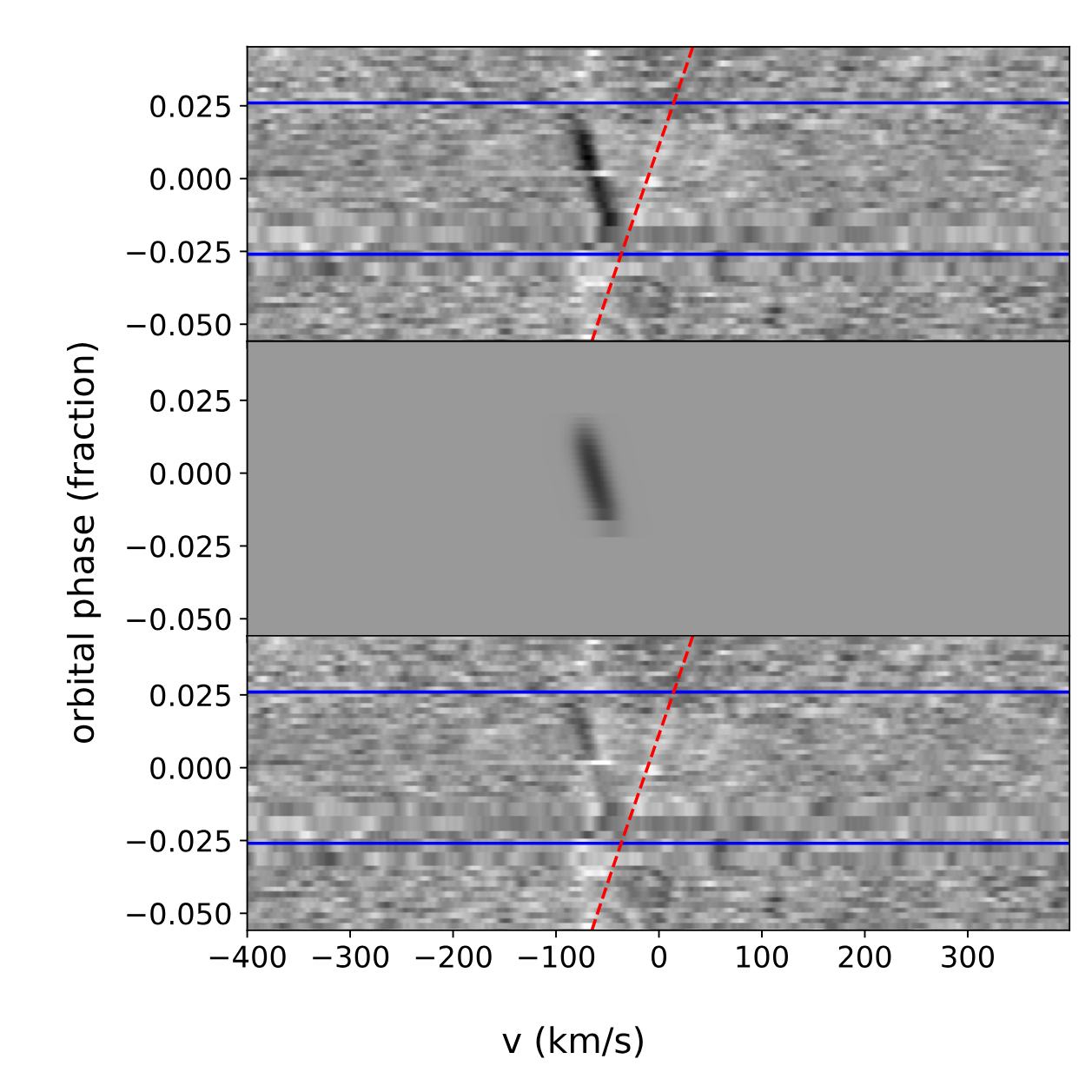Ultra-hot Jupiters (UHJs) orbit close to their host stars and experience extreme conditions, making them important laboratories to explore atmospheric composition and dynamics. Transmission spectroscopy is a useful tool to reveal chemical species and their vertical and longitudinal distribution in the atmosphere. We use transmission spectra from the PEPSI (Potsdam Echelle Polarimetric and Spectroscopic Instrument) spectrograph on the Large Binocular Telescope to search for species and measure their time-resolved wind velocities in the atmosphere of TOI-1518 b. We detect Fe I at 7.8 σ and Fe II at 8.9 σ, and tentatively detect Cr I at 4.4 σ and Ni I at 4.0 σ. The time-resolved wind velocities of Fe I show a velocity pattern that is consistent with the velocity pattern of Fe II . TOI-1518 b joins a small sample of UHJs for which time-resolved wind velocities have been measured.

Read more: Basinger et al. (2025), MNRAS, 543, 4136
